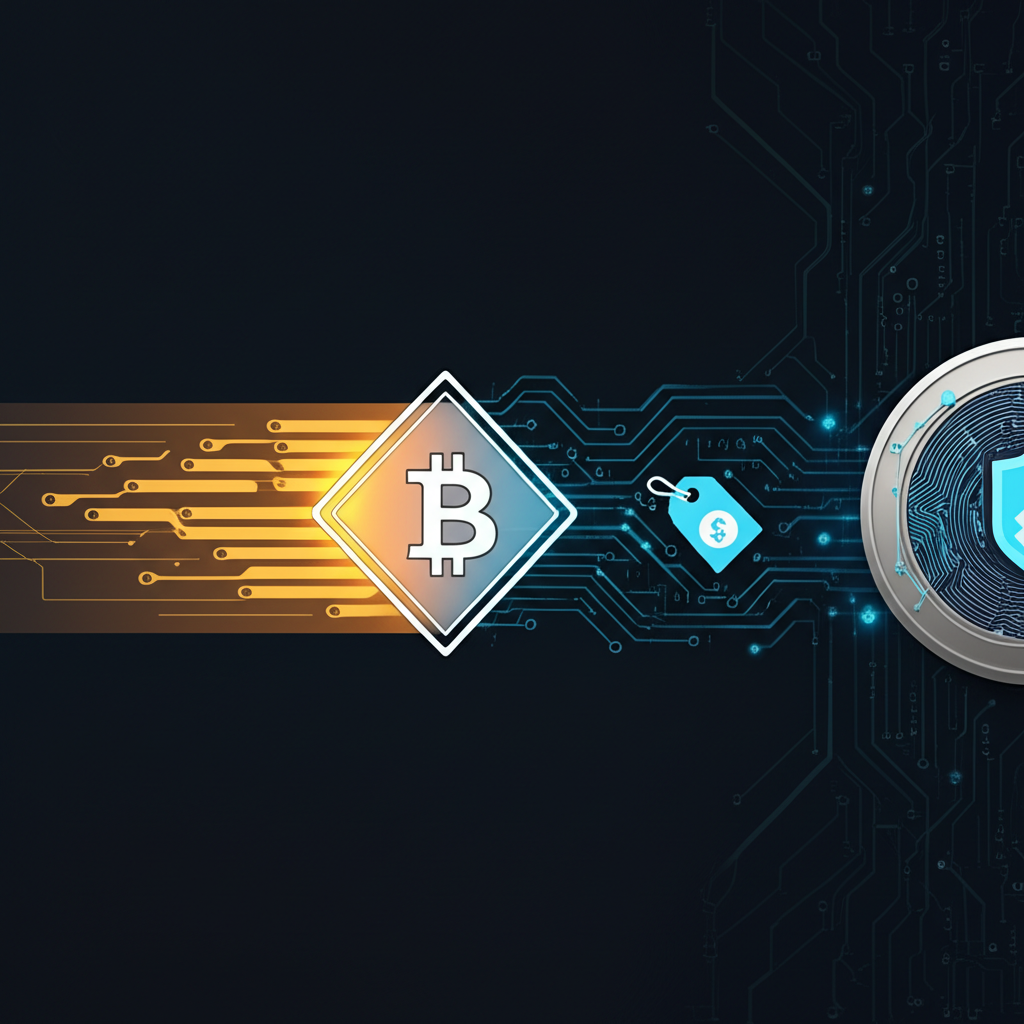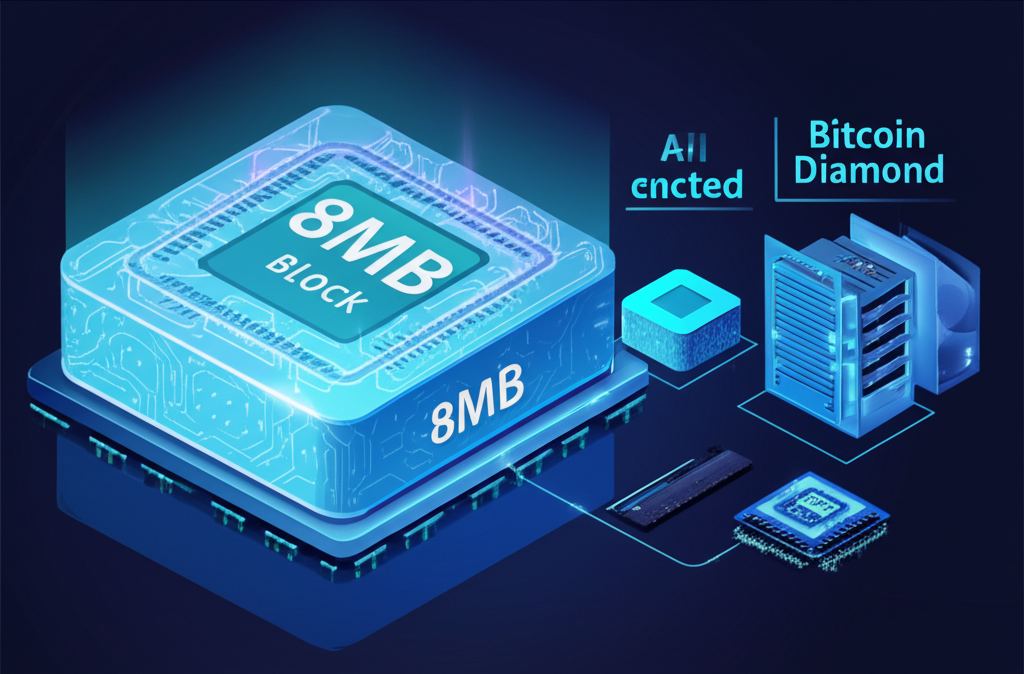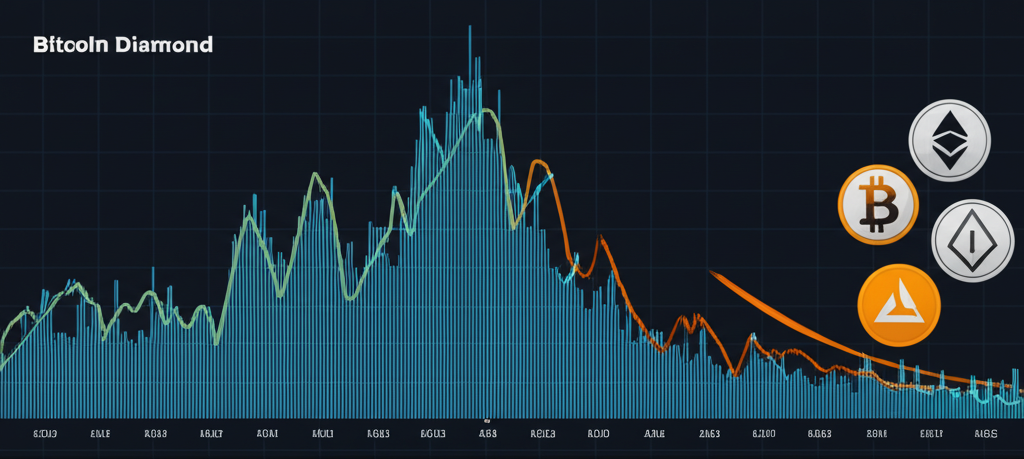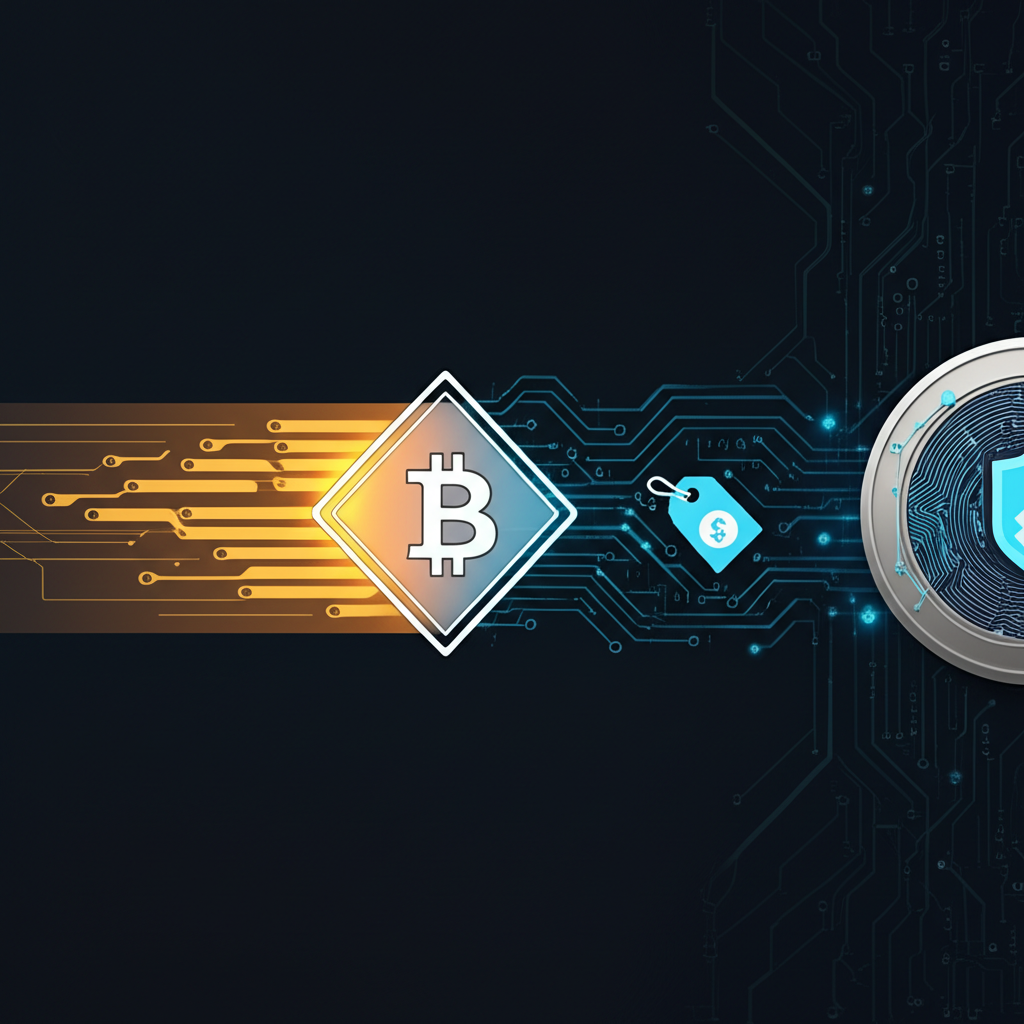Introduction to Bitcoin Diamond (BCD)

In November 2017, at block height 495866, a new player entered the cryptocurrency arena—Bitcoin Diamond (BCD)—born from a hard fork of the original Bitcoin blockchain. Developed by a group of anonymous contributors, BCD was conceived as a response to some of the long-standing challenges faced by Bitcoin, particularly around transaction speed, high fees, and limited privacy. At a time when Bitcoin forks were proliferating amid growing demand for scalable and user-friendly alternatives, BCD emerged with the goal of enhancing the core Bitcoin experience. By increasing block size, accelerating confirmation times, and adopting a more inclusive mining model, it aimed to create a more accessible digital currency suited for everyday use. Its launch reflected a broader movement within the crypto community to experiment with and improve upon Bitcoin’s foundational design.
What Makes Bitcoin Diamond Unique?

Bitcoin Diamond differentiates itself through a series of technical upgrades designed to enhance performance and inclusivity. One of its most significant changes is the expansion of block size to 8MB—eight times larger than Bitcoin’s original 1MB limit. This allows each block to carry far more transactions, reducing network congestion and enabling faster processing, especially during peak usage periods. Alongside this, BCD implements a shortened block generation interval of approximately 2.5 minutes, compared to Bitcoin’s standard 10 minutes. This means users can expect quicker confirmations, making BCD more practical for real-time payments and small-value transfers.
Another key innovation lies in its consensus mechanism. BCD uses the X13 proof-of-work algorithm, which is engineered to resist ASIC mining hardware. This design choice favors GPU-based mining rigs, lowering the barrier to entry for individual miners and promoting a more decentralized network. By discouraging dominance from large-scale mining operations, BCD aims to uphold the democratic spirit of early Bitcoin mining. Additionally, the total supply of BCD is set at 210 million coins—ten times that of Bitcoin—which developers argue improves liquidity and affordability for new users. These combined upgrades position Bitcoin Diamond not just as a fork, but as a deliberate reimagining of what a Bitcoin-derived currency could be.
Understanding the Market: Bitcoin Diamond Price and History

Since its inception, Bitcoin Diamond has followed a turbulent price path typical of many altcoins. In the immediate aftermath of the fork, BCD was distributed to existing Bitcoin holders, sparking initial interest and a short-term price spike. However, like most cryptocurrencies launched during the 2017–2018 boom, its value has since been shaped by broader market dynamics, including Bitcoin’s price movements, regulatory news, and shifting investor sentiment toward Bitcoin forks. Over time, BCD has struggled to maintain consistent momentum amid increasing competition from both established and emerging digital assets.
Market capitalization for BCD has fluctuated widely, reflecting its niche status in a crowded ecosystem. While it briefly attracted attention for its technical promises, long-term adoption and developer activity have remained limited compared to more prominent projects. The lack of major exchange listings in major U.S. platforms and minimal integration into mainstream financial services have further constrained its growth. Still, for certain traders and speculators, BCD remains an intriguing option within the broader altcoin portfolio. Investors analyzing its historical data often compare its performance against Bitcoin and other forks to assess volatility patterns and potential breakout signals, though past performance offers no guarantees in such a speculative market.
Where to Buy Bitcoin Diamond (BCD): Top Exchanges

Purchasing Bitcoin Diamond requires using a cryptocurrency exchange that supports BCD trading pairs. While not available on all platforms, several reputable exchanges continue to list BCD, offering varying levels of liquidity and accessibility. When choosing where to buy, it’s important to evaluate factors such as security protocols, fee structures, supported deposit methods, and ease of use. Below is an overview of exchanges that have historically provided access to BCD, with a focus on those accessible to international users, including those based in the United States.
| Exchange | BCD Trading Pairs | Fiat Support | Typical Fees | User Experience |
|---|---|---|---|---|
| Gate.io | BCD/USDT, BCD/ETH | Limited direct fiat, relies on stablecoins | 0.2% Maker/Taker | Advanced features, suitable for experienced traders |
| OKX | BCD/USDT | Supports various fiat via third-party | 0.08-0.1% Maker/Taker (tiered) | Comprehensive platform, good for all levels |
| MEXC | BCD/USDT | Limited direct fiat, primarily crypto-to-crypto | 0.2% Maker/Taker | User-friendly, wide range of altcoins |
*Note: Exchange listings and services can change. Always verify current availability and terms directly on the exchange’s website.*
Choosing the Right Exchange for You
The best exchange for buying Bitcoin Diamond depends on your experience level, preferred funding method, and security expectations. Beginners may prioritize platforms with intuitive interfaces, educational resources, and responsive customer support. For seasoned traders, advanced order types, lower fees, and deeper liquidity might take precedence. Regardless of experience, security should never be compromised. Look for exchanges that implement two-factor authentication (2FA), store the majority of user funds in cold wallets, and offer insurance coverage for digital assets. Also, review withdrawal limits and associated fees, as these can significantly affect your ability to move funds efficiently and cost-effectively.
Step-by-Step Guide: How to Buy Bitcoin Diamond
Acquiring Bitcoin Diamond doesn’t require advanced technical knowledge, but following a clear process helps ensure a smooth and secure transaction. Whether you’re new to crypto or expanding your portfolio, this guide outlines the essential steps to purchase BCD safely.
Step 1: Create and Verify Your Exchange Account
Begin by selecting a trusted exchange that lists Bitcoin Diamond and signing up for an account. This typically involves providing an email address and setting a strong, unique password. After registration, most platforms require completing a Know Your Customer (KYC) verification, which includes uploading a government-issued ID and proof of address. This step is standard across regulated exchanges and helps prevent fraud and illicit activity. Once verified, immediately enable two-factor authentication (2FA) using an authenticator app like Google Authenticator or Authy. This adds a critical layer of protection against unauthorized access.
Step 2: Fund Your Account
With your account active, the next step is to deposit funds. Available options vary by exchange:
- Bank Transfer (ACH/Wire): A cost-effective method for larger deposits, though processing times can range from one to five business days.
- Debit or Credit Card: Enables instant funding but usually comes with higher fees due to third-party processing costs.
- Cryptocurrency Deposit: If you already hold BTC, ETH, or USDT, you can transfer them directly to your exchange wallet and trade for BCD. This is often the fastest route for those already active in the crypto space.
Before depositing, check the exchange’s fee schedule and processing times to avoid unexpected delays or costs.
Step 3: Place Your Buy Order for BCD
Once your account is funded, head to the trading section and search for Bitcoin Diamond. Select the appropriate trading pair—most commonly BCD/USDT or BCD/BTC. You’ll have two primary order types to choose from:
- Market Order: Buys BCD instantly at the best available market price. Ideal for quick purchases, but you may pay slightly more due to slippage.
- Limit Order: Lets you set a specific price at which you want to buy. Your order executes only when the market reaches that price, giving you control over cost—but there’s no guarantee it will fill if the price doesn’t move in your favor.
Enter the amount of BCD or the value of your trade, confirm the details, and place your order. Once completed, your BCD will appear in your exchange wallet.
Storing Your Bitcoin Diamond: Wallet Options
After purchasing BCD, securing your holdings should be a top priority. Leaving funds on an exchange exposes them to risks such as hacks or platform failures. Transferring your coins to a personal wallet gives you full control and significantly improves security.
Hardware Wallets (Cold Storage)
Hardware wallets are physical devices that store your private keys offline, making them immune to online attacks. Often referred to as cold storage, they are the gold standard for securing large or long-term holdings. Devices like Ledger and Trezor support a wide range of cryptocurrencies, but you should confirm that Bitcoin Diamond is compatible before purchasing. Transactions require physical confirmation on the device, ensuring that even if your computer is compromised, your funds remain safe. While less convenient for frequent trading, their unmatched security makes them ideal for safeguarding valuable assets.
Software Wallets (Hot Storage)
Software wallets are digital applications that run on desktops, mobile devices, or as browser extensions. They offer quick access to your funds and are well-suited for smaller balances or regular use.
- Desktop Wallets: Installed directly on your computer, balancing security and usability.
- Mobile Wallets: Allow you to manage BCD on the go, often with QR code scanning and push notifications.
- Web Wallets: Accessible through a browser, sometimes integrated with exchanges or decentralized apps.
While convenient, these wallets are connected to the internet and therefore more vulnerable to malware and phishing. To minimize risk, only download wallets from official sources, use strong passwords, and keep your operating system and antivirus software up to date.
Exchange Wallets
When you buy BCD on an exchange, your coins are automatically stored in an exchange-controlled wallet. This setup is convenient for trading but carries significant risk. You don’t own the private keys, meaning you don’t have full control over your assets. Exchanges have been targeted by hackers in the past, and some have collapsed due to mismanagement. As a general rule, it’s best to treat exchange wallets as temporary holding accounts. For long-term storage, always transfer your BCD to a personal hardware or software wallet where you control the keys.
Risks and Considerations When Buying Bitcoin Diamond
Investing in altcoins like Bitcoin Diamond comes with unique challenges. While the potential for high returns exists, so does the risk of substantial loss. Understanding these risks helps you make informed decisions and protect your capital.
Market Volatility and Price Fluctuations
Cryptocurrencies are known for their extreme price swings, and BCD is no exception. Its value can surge or plummet within hours due to market sentiment, news events, or changes in regulatory policy. Unlike established assets, BCD lacks strong institutional backing or widespread adoption, making it especially sensitive to speculation. Investors should be prepared for emotional and financial turbulence and should only allocate funds they can afford to lose without impacting their financial stability.
Security Risks and Best Practices
The decentralized nature of crypto means you are your own bank—responsibility for security falls entirely on you. Common threats include phishing scams, fake websites, and malicious software designed to steal private keys. To protect your investment:
- Use strong, unique passwords for every account.
- Always enable two-factor authentication (2FA).
- Double-check URLs before logging in—scammers often create fake versions of exchange sites.
- Never share your seed phrase or private keys with anyone.
- Store your recovery phrase offline, preferably on paper or a metal backup.
- Avoid using public Wi-Fi when managing your wallet or exchange accounts.
Staying vigilant is just as important as choosing a secure wallet.
Regulatory and Tax Implications in the US
In the United States, the IRS classifies cryptocurrencies as property for tax purposes. This means every time you sell, trade, or spend BCD, it may trigger a taxable event. Capital gains taxes apply based on how long you held the asset and your income level. Short-term gains (held less than a year) are taxed at your ordinary income rate, while long-term gains (held over a year) benefit from lower rates. Keeping detailed records of all transactions—including dates, values in USD, and purposes—is essential. Given the complexity of crypto taxation, consulting a qualified tax professional is strongly recommended. For official guidance, refer to the IRS’s FAQs on Virtual Currency Transactions.
Bitcoin Diamond vs. Other Bitcoin Forks: A Comparative Look
Bitcoin Diamond is one of several forks that sought to improve on Bitcoin’s original design. Comparing it to other prominent forks, such as Bitcoin Gold (BTG), reveals different philosophies and technical approaches.
| Feature | Bitcoin Diamond (BCD) | Bitcoin Gold (BTG) |
|---|---|---|
| Origin (Fork Date) | Nov 2017 (Block 495866) | Oct 2017 (Block 491407) |
| Block Size | 8MB | 1MB |
| Block Time | ~2.5 minutes | ~10 minutes |
| Mining Algorithm | X13 (ASIC-resistant) | Equihash (ASIC-resistant) |
| Total Supply | 210 Million | 21 Million |
| Primary Goal | Faster transactions, lower fees, enhanced privacy (segwit + privacy features) | Decentralized mining (GPU-friendly), restore “one CPU, one vote” |
While both BCD and BTG aim to democratize mining through ASIC-resistant algorithms, their broader objectives differ. BCD emphasizes scalability and transaction efficiency, making it more suited for payment use cases. Bitcoin Gold, by contrast, focuses almost exclusively on mining decentralization, preserving Bitcoin’s original block size and block time. These differences highlight the diversity of visions within the Bitcoin fork ecosystem. Market reception has varied, with both projects facing challenges in maintaining developer momentum and user engagement over time.
The Future of Bitcoin Diamond: Outlook and Potential
The long-term trajectory of Bitcoin Diamond remains uncertain. Its development roadmap includes plans to enhance privacy, improve transaction speed, and expand its ecosystem through integrations with decentralized applications. The project has also expressed interest in forming strategic partnerships to increase real-world utility. However, its success hinges on overcoming key obstacles: limited exchange visibility, low trading volume, and competition from both newer blockchains and more established forks.
Widespread adoption is critical. Without active users and consistent development, even technically sound projects can fade into obscurity. BCD’s larger supply and faster block times give it a theoretical edge in usability, but these advantages mean little without network effects. Investors should monitor community activity, GitHub contributions, and announcements from the core team to gauge momentum. While BCD may never reach the prominence of Bitcoin or Ethereum, it could still carve out a niche in regions or communities seeking faster, lower-cost alternatives. For the latest updates, the Bitcoin Diamond Official Website remains the most reliable source.
Conclusion
Bitcoin Diamond presents an interesting case study in the evolution of blockchain technology—one that seeks to refine Bitcoin’s core features for better performance and accessibility. With an 8MB block size, 2.5-minute block times, and ASIC-resistant mining, BCD offers tangible improvements in speed and decentralization. Acquiring it is straightforward through platforms like Gate.io, OKX, and MEXC, though U.S. investors must remain cautious about regulatory and tax compliance. Security best practices, including the use of hardware wallets and 2FA, are non-negotiable for protecting your investment.
While BCD’s market presence remains modest, it serves as a reminder of the ongoing experimentation within the crypto space. Whether it achieves lasting relevance will depend on adoption, innovation, and its ability to stand out in a saturated market. As with any altcoin, due diligence is essential. By understanding BCD’s technical foundations, comparing it to similar projects, and approaching investment with caution, you can make more informed decisions about its role in your portfolio.
Frequently Asked Questions (FAQs)
1. What is Bitcoin Diamond (BCD) and how does it differ from Bitcoin?
Bitcoin Diamond (BCD) is a hard fork of Bitcoin that occurred in 2017. It differs from Bitcoin primarily in its technical specifications: BCD features an 8MB block size (compared to Bitcoin’s 1MB) for faster transactions, a 2.5-minute block time (vs. 10 minutes), and uses an ASIC-resistant X13 mining algorithm. It also has a larger total supply of 210 million coins.
2. Is Bitcoin Diamond a good long-term investment opportunity?
Determining if Bitcoin Diamond is a good long-term investment requires thorough personal research and risk assessment. Like many altcoins, BCD is highly volatile and its future value depends on factors such as development progress, community adoption, market trends, and competition from other cryptocurrencies. It’s crucial to consider your investment goals and risk tolerance.
3. Which cryptocurrency exchanges are best for buying Bitcoin Diamond in the United States?
For users in the United States, exchanges like Gate.io, OKX, and MEXC have historically supported Bitcoin Diamond (BCD) trading. However, availability can change, and users should always verify the current listings and regulatory compliance for their specific region directly on the exchange’s website. Look for platforms with strong security, reasonable fees, and good liquidity.
4. How much would I need to invest to start buying Bitcoin Diamond?
The minimum investment amount for Bitcoin Diamond varies by exchange. Most platforms allow you to buy fractions of a BCD, meaning you can start with a relatively small amount, often as low as $10-$50 depending on the exchange’s minimum trade size. It’s important to factor in any trading fees when calculating your initial investment.
5. What are the most secure ways to store Bitcoin Diamond after purchase?
The most secure ways to store Bitcoin Diamond are using hardware wallets (cold storage) like Ledger or Trezor (if BCD is supported), which keep your funds offline. Software wallets (desktop or mobile apps) offer a balance of security and convenience for smaller amounts, but are less secure than hardware wallets. Leaving BCD on an exchange wallet is convenient for trading but carries higher risk.
6. How does Bitcoin Diamond compare to other Bitcoin forks like Bitcoin Gold?
Both BCD and Bitcoin Gold (BTG) are Bitcoin forks that aimed for more decentralized mining through ASIC-resistant algorithms. However, BCD focuses on faster transactions and a larger block size (8MB) with an X13 algorithm, while BTG emphasizes a GPU-friendly Equihash algorithm to restore the “one CPU, one vote” mining philosophy, maintaining Bitcoin’s 1MB block size.
7. What is the current value of Bitcoin Diamond today?
The current value of Bitcoin Diamond (BCD) fluctuates constantly with the cryptocurrency market. To get the most up-to-date price, you should consult a reliable cryptocurrency tracking website like CoinMarketCap or CoinGecko, or check directly on a cryptocurrency exchange that lists BCD.
8. Are there any specific technical advantages to the Bitcoin Diamond blockchain?
Yes, Bitcoin Diamond offers several technical advantages. These include an increased block size of 8MB, allowing for more transactions per block, and a faster block generation time of 2.5 minutes, leading to quicker transaction confirmations. It also utilizes the X13 mining algorithm, designed to be ASIC-resistant, which aims to promote more decentralized mining.
9. What common pitfalls should new investors avoid when buying BCD?
New investors should avoid common pitfalls such as:
- Investing more than they can afford to lose due to high volatility.
- Failing to enable two-factor authentication (2FA) on their exchange accounts.
- Leaving large amounts of BCD on an exchange for extended periods.
- Falling for phishing scams or sharing private keys.
- Not conducting their own research (DYOR) before investing.
- Making emotional trading decisions based on market hype or fear.
10. Can I convert other cryptocurrencies, like Bitcoin, into Bitcoin Diamond?
Yes, on many cryptocurrency exchanges that list BCD, you can convert other cryptocurrencies such as Bitcoin (BTC) or Ethereum (ETH) into Bitcoin Diamond. This is typically done by depositing your existing crypto into the exchange and then using a crypto-to-crypto trading pair (e.g., BCD/BTC or BCD/ETH) to execute the trade.

留言